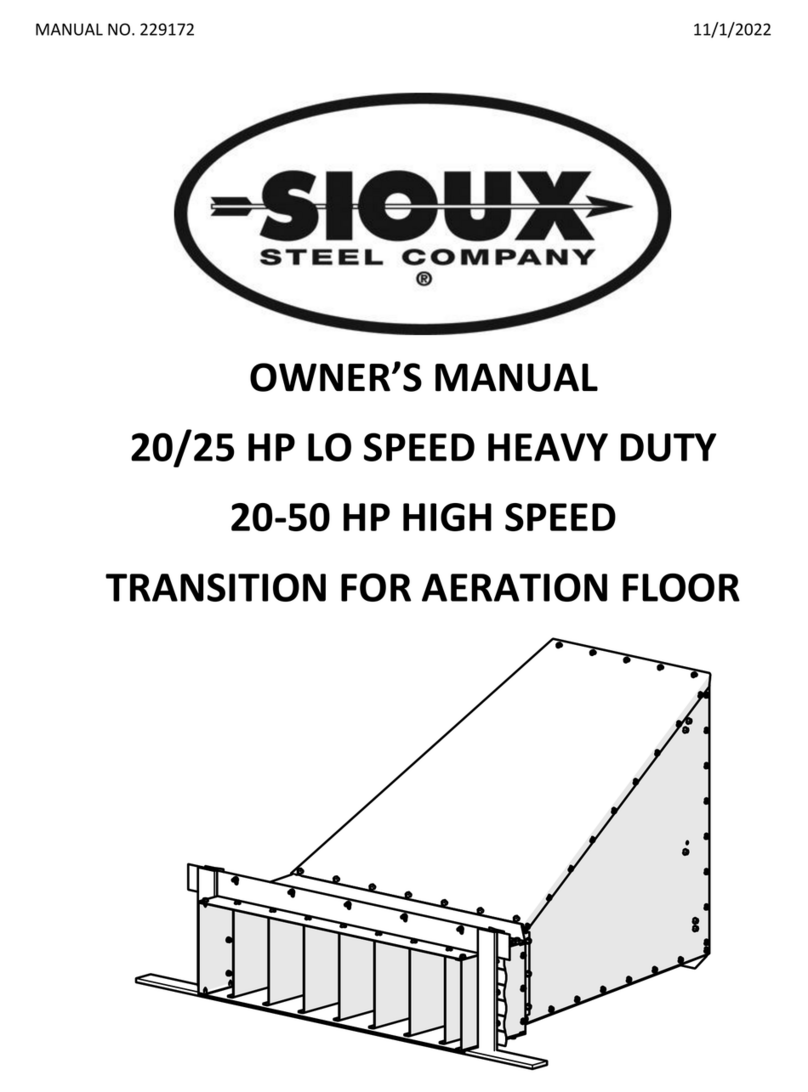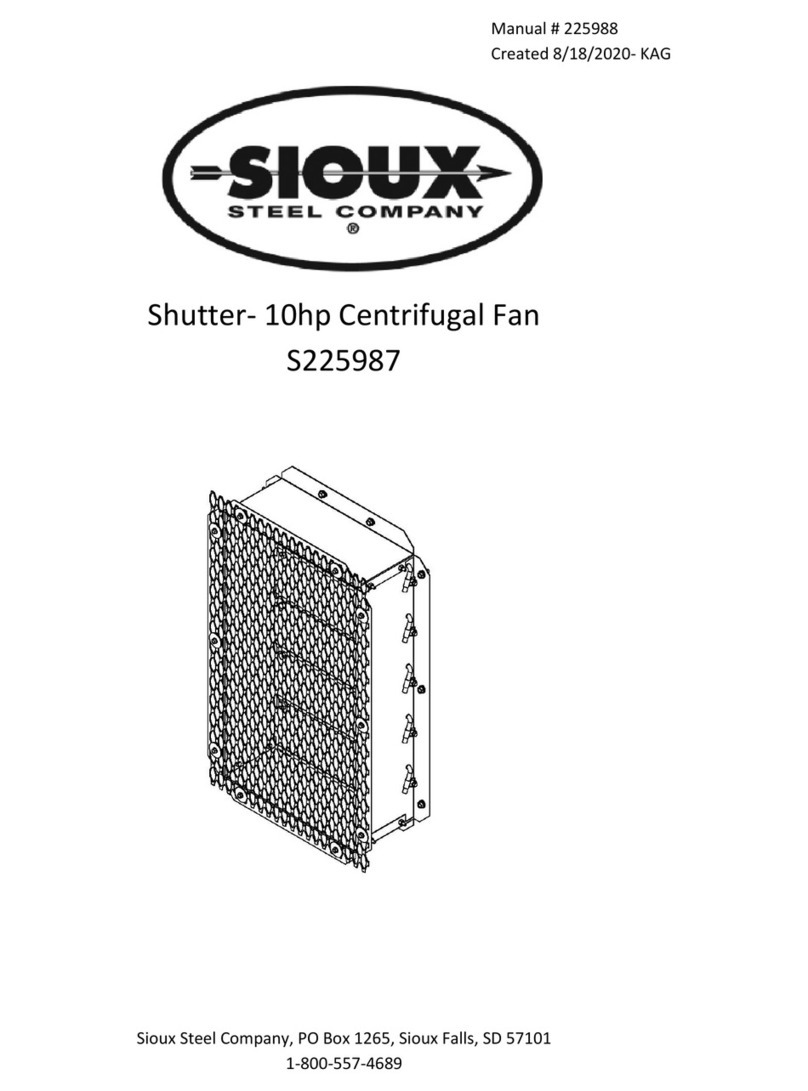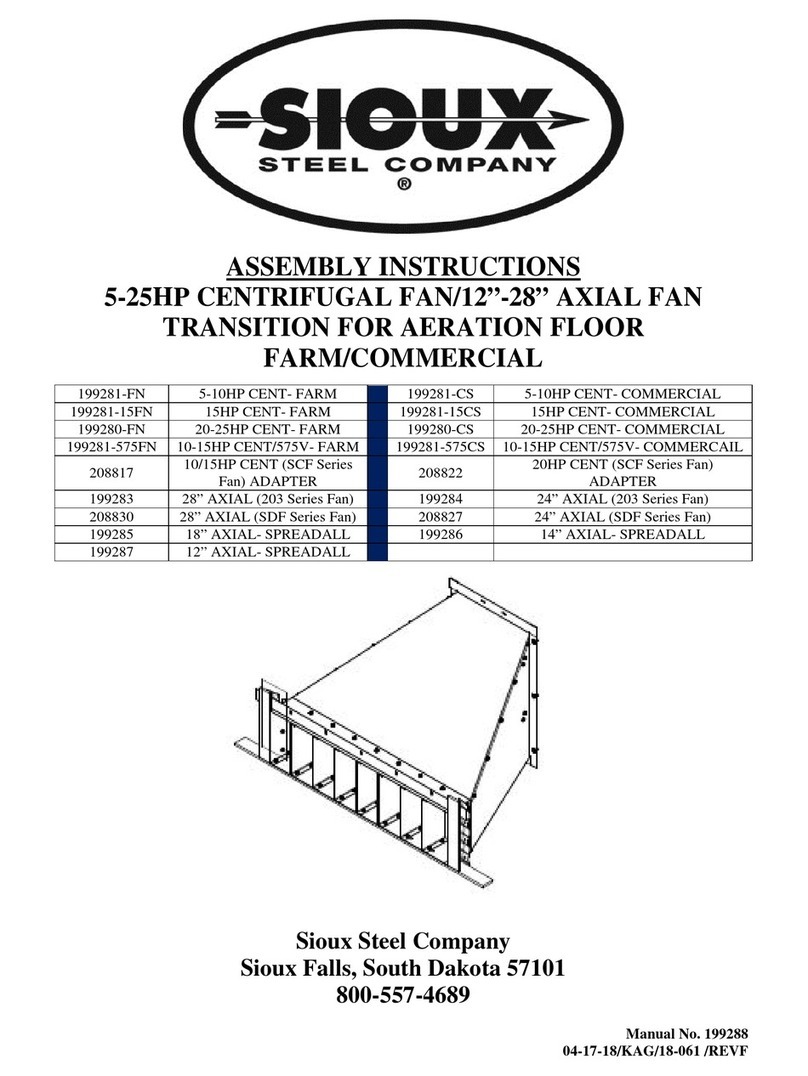
5
SAFETY
RECOGNIZE THE SAFETY ALERT SYMBOL
The above symbol means “ATTENTION! BE ALERT! YOUR PERSONAL SAFETY IS INVOLVED!”
Note this symbol in instructions for important issues concerning your personal safety. Read each message
carefully to avoid personal injury or death.
FOLLOW MACHINE SAFETY SIGNS & MESSAGES
Observe safe operating practices. Carefully read this manual and all safety signs on your equipment. Safety
signs must be kept in good condition. Replace missing or damaged safety decals or shields. Safety decals
and shields are available free of charge from Sioux Steel Company, 196 ½ E. 6
th
St., Sioux Falls, SD
57101-1265.
Learn how to use controls and operate equipment. Do not let anyone operate unit (especially youth) without
thorough training of basic operating and safety procedures.
Make no unauthorized modifications to equipment. Modifications may endanger function and/or safety of
unit. Periodically check all mechanical and electrical components. Keep unit in good working condition.
PRACTICE SAFE MAINTENANCE
Read and understand correct service procedures before operating. Keep area clean and dry to prevent
accidents. Machine should never be lubricated, serviced, or adjusted while it is in operation. Hands, feet
and clothing must be kept away from all moving parts. Keep all parts in good condition and properly
installed. Fix any damage immediately. Qualified service personnel should replace worn or broken parts.
Any built-up grease, oil, and debris around machine should be removed.
EMERGENCIES-KNOW WHAT TO DO
A first aid kit should be made readily available.
In the event of fire, a fire extinguisher should be at hand.
Have emergency numbers near your telephone for doctors, emergency medical squad, ambulance service,
hospital, and fire department and also have written directions to your location.
WEAR PROTECTIVE CLOTHING
CLOTHING- Avoid baggy clothes to avoid catching on moving parts.
HEARING PROTECTION- When high noise levels are encountered, ear plugs or muffs should be used.
EYE PROTECTION- Safety glasses should be worn at all times to protect eye from debris.
GLOVES- Always wear gloves to protect hands from sharp edges.
STEEL TOE SHOES- Appropriate shoes should be worn to protect toes from falling debris.
RESPIRATOR- In order to prevent breathing toxic fumes or dust, a respirator may be needed.
HARD HAT- Appropriate headwear should be worn to protect head from falling debris.
FALL PROTECTION- Appropriate fall protection should be worn when working at elevations greater
than six (6) feet.
Signal Word Color Potential Injury or Damage Likelihood of Occurrence
DANGER Red
Severe
Indicates an imminently hazardous situation which if not
avoided will result in death or serious injury.
WILL Occur
if Warning is ignored
WARNING Orange
Severe
Indicates a hazardous situation which if not avoided will
result in death or serious injury.
COULD Occur
if Warning is ignored
CAUTION Yellow
Minor
Indicates a hazardous situation which if not avoided will
result in minor or moderate injury.
WILL or COULD Occur
if Warning is ignored
NOTICE
Blue
or
None
Indicates an important message or instruction not related
N/A
SAFETY ALERT SIGNAL WORDS






























